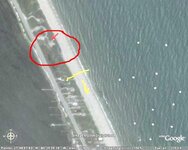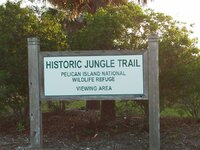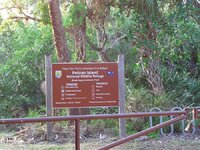Here's a link with good info about the McLarty Treasure Museum.
McLarty Treasure Museum - Wikipedia, the free encyclopedia
f you ever get to Florida there is this small museum on the east coast. It was built on a survivors camp after a hurricane destroyed a treasure fleet. I am posting an aerial pic I think some folks might enjoy studying. The red circle is the museum. The white dots in the ocean are actual sites where treasure has been found. I personally believe that right under the beach near rock bottom is the mother lode. HH, Cap Z.

McLarty Treasure Museum - Wikipedia, the free encyclopedia
f you ever get to Florida there is this small museum on the east coast. It was built on a survivors camp after a hurricane destroyed a treasure fleet. I am posting an aerial pic I think some folks might enjoy studying. The red circle is the museum. The white dots in the ocean are actual sites where treasure has been found. I personally believe that right under the beach near rock bottom is the mother lode. HH, Cap Z.










